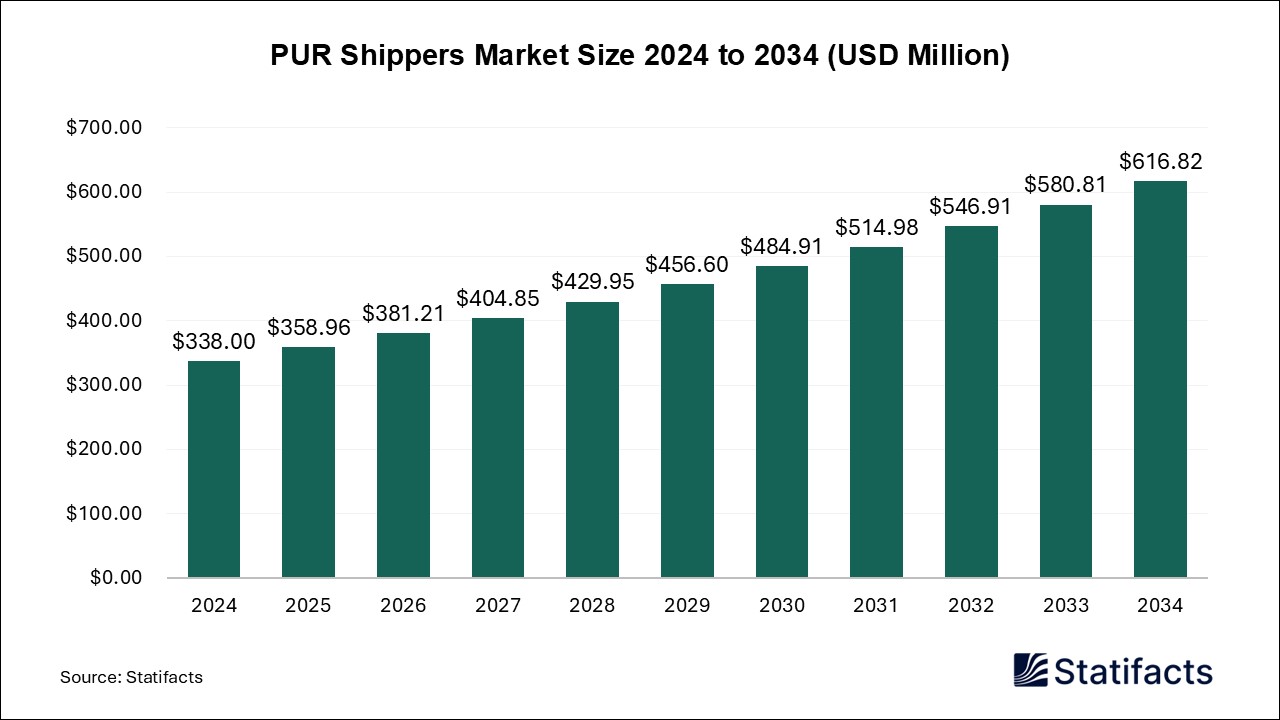Last Updated: 11 Jul 2025
Source: Statifacts
By clicking “Accept All Cookies” you agree to the storing of cookies on your device to enhance site navigation, analyze site usage, and assist in our marketing efforts.
Privacy PolicyUS Diagnostic Imaging Market (By Therapeutic Application: Ultrasound Devices (Portable, Handheld), X-ray Systems (Including C-arm Systems), Others; By Region: North America, Europe, Asia Pacific, LAMEA) Industry Size, Share, Growth, Trends 2025 to 2034.
The US diagnostic imaging market size accounted for USD 5.35 billion in 2024 and is predicted to touch around USD 19.74 billion by 2034, growing at a CAGR of 13.94% from 2025 to 2034.
| Industry Worth | Details |
| Market Size in 2025 | USD 6.12 Billion |
| Market Size by 2034 | USD 19.74 Billion |
| Market Growth Rate from 2025 to 2034 | CAGR of 13.94% |
The U.S. diagnostic imaging market deals with products using numerous techniques for the visual representation of diverse tissues and organs of the human body to detect the causes of an injury or illness, confirm a diagnosis, and monitor treatment response. Numerous machines and techniques, like X-ray, positron emission tomography (PET), computed tomography (CT), magnetic resonance imaging (MRI), digital mammography, single-photon emission computed tomography (SPECT), and diagnostic sonography, can create images of the activities and structures within the body. Several imaging tests are simple, non-invasive, and painless. Thus, some may need to remain inside the apparatus for an extended period, which can be uncomfortable.
AI has enhanced the U.S. diagnostic imaging market by enabling faster, more accurate diagnoses, reducing radiologists’ workload, and supporting precision medicine through advanced decision-making tools. With AI-generated medical imaging, healthcare providers can find conditions faster, furthermore permits earlier intervention. Be it in the form of X-rays or CT scans, radiologists usually demand valuable time to study these images. AI-driven medical imaging tools use massive computing power and powerful algorithms to quickly offer decision support to physicians.
AI technology, when implemented in medical imaging, can enhance the accuracy of precision medicine. For example, machine learning and AI tools can transform different types of lung cancer, thus permitting the most appropriate therapy. Thus, AI-permitted medical imaging can more precisely forecast the survival rate of tumor patients based on the measured grade and stage. AI-permitted medical imaging tools can assist in automating the analysis, thereby decreasing the overall manual workload.
Key drivers of the U.S. diagnostic imaging market include the rising prevalence of chronic diseases and the growing adoption of preventive diagnostics supported by advanced imaging technologies like 3D and 4D scans.
Chronic diseases usually need on-going monitoring and early awareness to be managed effectively. Diagnostic imaging plays a vital role in determining these conditions at earlier, more treatable stages. Diagnostic imaging permits the assessment of individual patient characteristics, contributing to more tailored and effective treatment approaches. Diseases such as cancer, cardiovascular disease, and neurological conditions depend heavily on diagnostic imaging for staging, diagnosis, and treatment monitoring.
Preventive diagnostics permit the detection of diseases such as cancer, neurological disorders, and cardiovascular issues at earlier stages, when treatment is usually more effective and less expensive. Sophisticated software and imaging techniques like those utilized in 3D and 4D imaging offer more detailed and accurate diagnostic data, driving the need for these advanced systems. The acceptance of 3D and 4D imaging over numerous specialties, such as radiology, obstetrics, and cardiology, permits functional information and comprehensive anatomical anatomy, assisting in treatment planning and precise diagnosis.
The U.S. diagnostic imaging market faces restraints from complex regulatory and reimbursement processes, along with economic disparities that limit equitable access and efficient use of costly imaging technologies.
The regulatory landscape for medical apparatus in the United States can be intricate and time-consuming, posing a challenge for key players. Diagnostic imaging devices must undergo rigorous acceptance procedures by regulatory bodies such as Health Canada and the U.S. Food and Drug Administration (FDA) before they can be noticeable and utilized in clinical settings. This procedure can delay the establishment of new technologies as well as increase development expenses. Moreover, reimbursement policies for diagnostic imaging processes can vary remarkably between healthcare systems and insurers.
Diagnostic imaging utilizes non-invasive devices to visualize different internal human anatomy and physiology. In higher-income and advanced economies of the world, there is a huge variation in the use and rate of expansion of diagnostic imaging technology such as computed tomography (CT). Even in high-use jurisdictions such as the US, there is a large variation. Some features of diagnostic imaging as a medical product, like strong economies of scale for high fixed expense equipment, informational asymmetry between manufacturers and patients, and the potency for moral hazard, create obvious challenges to encouraging its efficient usage. For most imaging applications, the marginal expense is relatively low, leading patients and their doctors to seek data even if the marginal health advantages are low. Moreover, marginal expenses pricing would neither cover the fixed expenses of the equipment nor offer sufficient funds for long-term dynamic efficiency.
The U.S. diagnostic imaging market offers opportunities through the integration of AI and advanced imaging technologies, enabling faster, more accurate diagnoses, personalized treatment, and improved workflow efficiency.
AI and ML algorithms can analyze medical images with speed and precision, assisting in early disease detection, mainly in areas such as cancer diagnosis. Advanced imaging modalities such as 3D/4D ultrasound, PET-CT scans, and high-definition MRI offer more detailed and accurate visualizations of internal structures, contributing to better diagnosis and treatment planning. Diagnostic imaging, integrated with AI, assists in tailoring treatment plans to individual patient profiles, enhancing treatment efficacy and reducing adverse effects. AI-powered tools can automate image analysis, decrease interpretation time for radiologists, and enhance overall workflow efficiency.
“Hologic is a leading innovator in women’s health with a commitment to advancing cervical and breast cancer screening technologies, from the first liquid-based cytology test to the first 3D mammography system and now the first FDA-cleared digital cytology platform,” said Jennifer Schneiders, PhD, president, Diagnostic Solutions at Hologic in the company’s press release.
“Aurora and Clarify DL are powerful reflections of GE HealthCare’s ongoing investment in next-generation imaging solutions that empower clinicians to practice precision medicine and make more informed decisions,” says Jean-Luc Procaccini, President and CEO, Molecular Imaging and Computed Tomography, GE HealthCare. “By providing diagnostic precision while enabling improved workflow, these nuclear medicine technologies allow clinicians to deliver effective, patient-centered care, ultimately helping drive better outcomes. We are proud to be a leader in nuclear medicine and AI technologies and excited to make Aurora with Clarify DL available to healthcare systems, like University Hospitals, and clinicians throughout the United States.”
The ultrasound devices segment dominated and is expected to sustain the position with the fastest growing in the U.S. diagnostic imaging market in 2024. Ultrasound imaging is a well-known and broadly used diagnostic tool, making it a remarkable part of the diagnostic imaging market. It is extensively utilized in cardiology, obstetrics/gynecology, and for guiding minimally invasive procedures. Factors such as its safety, portability, cost-effectiveness, and ability to offer real-time imaging are boosting its adoption in numerous clinical settings, including point-of-care applications.
The X-ray systems segment shows a notable growth in the U.S. diagnostic imaging market during the forecast period. X-ray imaging is a practice that is usually performed in hospitals, diagnostic centers, and clinics. The increasing prevalence of conditions such as bone fractures, dental issues, lung diseases, and certain types of cancers is boosting the requirement for X-ray imaging. The digitization of X-ray workflows, which includes electronic transfer of images as well as integration with other healthcare systems, has thus driven the adoption of X-ray technology.
The U.S. diagnostic imaging market is greatly competitive, with major players focusing on technological advancements, geographic expansion, and strategic partnerships to gain market share. Firms are investing in AI and ML for enhanced image interpretation, collaborating to widen service offerings, and exploring mergers and acquisitions to build their positions.
GE HealthCare Technologies Inc. is a global medical device provider that designs, develops, manufactures, and distributes clinical systems and diagnostic imaging products and services for biopharmaceutical manufacturing, drug discovery, and cellular technologies, as well as imaging agents utilized during medical scanning procedures, and a wide range of healthcare IT solutions.
Hologic Inc. (Hologic) develops, producers, and supplies medical imaging systems, surgical products, and diagnostic products. It provides products that assist in the diagnosis of human diseases; GYN surgical products, breast imaging and related products, including endometrial ablation systems and skeletal health products like mini-C-arm imaging products and dual-energy X-ray bone densitometry systems. The firm provides its solutions to surgeons, clinical laboratories, hospitals, and healthcare providers.
Promaxo tackles competition from key players such as Philips, GE Healthcare, and Siemens Healthineers, along with other firms advancing MRI and robotics solutions for prostate care. Promaxo differentiates itself via its compact, patient-centric MRI system and AI-derived software for prostate cancer diagnosis and treatment.
| Segments | Shares (%) |
| Ultrasound Devices (Portable, Handheld) | 45% |
| X-ray Systems (including C-arm systems) | 40% |
| Others | 15% |
Published by Rohan Patil
| Therapeutic Application | 2024 | 2025 | 2026 | 2027 | 2028 | 2029 | 2030 | 2031 | 2032 | 2033 | 2034 |
|---|---|---|---|---|---|---|---|---|---|---|---|
| Ultrasound Devices (Portable & Handheld) | 8.64 | 9.93 | 11.33 | 12.90 | 14.78 | 16.82 | 19.13 | 21.79 | 24.92 | 28.33 | 32.42 |
| X-ray Systems (incl. C-arm) | 7.68 | 8.65 | 9.82 | 11.20 | 12.69 | 14.43 | 16.39 | 18.62 | 21.09 | 24.07 | 27.23 |
| Others | 2.88 | 3.27 | 3.72 | 4.21 | 4.74 | 5.41 | 6.21 | 7.07 | 8.04 | 9.10 | 10.36 |
Last Updated: 11 Jul 2025
Source: Statifacts
| Subsegment | 2024 | 2025 | 2026 | 2027 | 2028 | 2029 | 2030 | 2031 | 2032 | 2033 | 2034 |
|---|---|---|---|---|---|---|---|---|---|---|---|
| Ultrasound Devices (Portable & Handheld) | 8.64 | 9.93 | 11.33 | 12.90 | 14.78 | 16.82 | 19.13 | 21.79 | 24.92 | 28.33 | 32.42 |
| X-ray Systems (incl. C-arm) | 7.68 | 8.65 | 9.82 | 11.20 | 12.69 | 14.43 | 16.39 | 18.62 | 21.09 | 24.07 | 27.23 |
| Others | 2.88 | 3.27 | 3.72 | 4.21 | 4.74 | 5.41 | 6.21 | 7.07 | 8.04 | 9.10 | 10.36 |
The market is driven by rising incidences of chronic diseases, an aging population, and growing demand for early and accurate diagnosis using advanced imaging technologies like MRI and CT.
X-ray imaging remains the most widely used due to its cost-effectiveness and accessibility, while MRI and CT scans are rapidly growing for their detailed diagnostic capabilities.
Ultrasound and MRI imaging are among the fastest-growing segments, supported by technological innovation, expanding outpatient imaging centers, and non-invasive procedures
Artificial intelligence is increasingly used for image interpretation, workflow optimization, and early disease detection, improving accuracy and reducing diagnostic turnaround times.
High equipment costs, reimbursement limitations, and a shortage of skilled radiologists continue to challenge the widespread adoption of advanced diagnostic imaging tools.
To get full access to our Market Insights, you need a Professional Account or a Business Suite.

You will receive an email from our Business Development Manager. Please be sure to check your SPAM/JUNK folder too.

You will receive an email from our Business Development Manager. Please be sure to check your SPAM/JUNK folder too.

Our customers work more efficiently and benefit from


